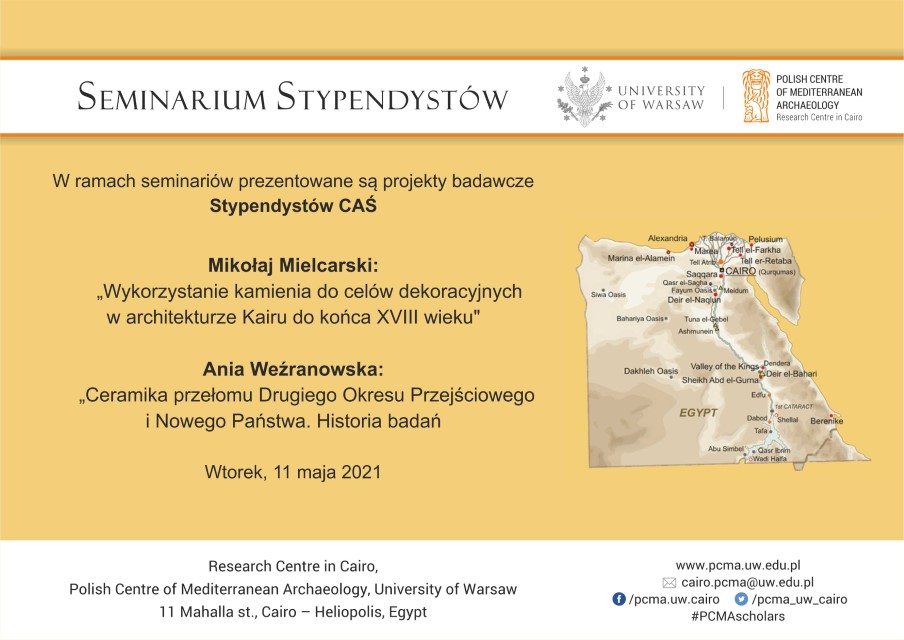The PCMA UW Research Centre in Cairo continues the series of seminars during which the holders of PCMA scholarships (Stypendium CAŚ) can present the results of their research. The latest event will feature two presentations.
Mikołaj Mielcarski will give a talk “Decorative usage of stone in the Cairo’s architecture until the end of the 18th century”, and Anna Weźranowska will present on the subject “Pottery of the late Second Intermediate Period and early New Kingdom: state of research”.
Abstract (M. Mielcarek): The topic of the speech is the decorative use of marble in the architecture of Cairo until the end of the 18th century against the background of the entirety of Islamic art of that time, and an attempt to relate it to European art. Since Antiquity, marble played a key role in decorative art, becoming the most popular material used to decorate the numerous buildings erected during the Mamluk Sultanate. An attempt to systematize the historic material on the basis of the collected photographic documentation and the results of the query will be presented, aimed at identifying research perspectives for the issue of intercultural interactions with the Latin world.
Abstract (A. Weźranowska): Transitions between historical periods history are always interesting to investigate. When Pharaoh Kamose, and after him, Ahmose defeated the Hyksos in the 16th century B.C., they established one of the most prosperous times of Egyptian history, the New Kingdom, reuniting the land and setting the way for their successors to extend the kingdom to a vast empire. But how do these historical events relate to daily life as seen through the remains of ceramic vessels? Although it is not yet as well known as the pottery of later date, the material of this transitional time has already been studied by several scholars. It appears that there was a major change in the ceramic production at the beginning of the New Kingdom. New trends came from Upper Egypt and the new capital, Thebes, and spread across the whole country. Imports from abroad, notably from Cyprus and Canaan, became more and more common. The result of this bibliographical survey will form a basis for the project of a PhD thesis aiming at creating a comprehensive study of the changes in pottery tradition between the Second Intermediate Period and the New Kingdom.

